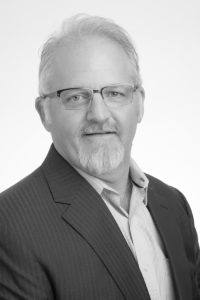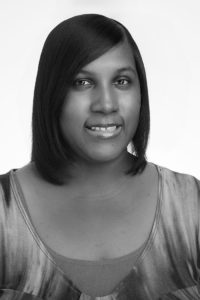Advisers Seek Innovative Ways To Increase Retirement Savings
Are you struggling to save for your retirement? Check out this great article from Employee Benefits Adviser on what employee benefits advisers are doing to help their clients prepare for their retirement by Cort Olsen.
In a recent forum co-hosted by Retirement Clearinghouse, EBRI, Wiser and the Financial Services Roundtable, experts shared how automated retirement portability programs could be the key to increased participation in private-sector retirement plans.
Today, at least 64% of Americans say they do not have sufficient funds for retirement and less than half of private-sector workers participate in workplace retirement programs. Former U.S. Sen. Kent Conrad, a Democrat from North Dakota, says these statistics could improve through better access to workplace retirement savings plans.
“So many small businesses tell [Congress], ‘Look we’d like to offer a plan, but we just can’t afford it,’” Conrad says. “We take the liability off of their shoulders, we take the administrative difficulty off their shoulders and allow a third party to administer the plans, run the plans and have the financial responsibility for the plans, which makes a big difference for employers.”
With these improved access points to savings plans, Conrad says the opportunity arises to create new retirement security plans for smaller businesses with fewer than 500 employees, enabling multiple employers — even from different industries — to band together to offer their workers low cost, well-designed options.
“Once the [savings plan] has been put in place for a period of time, we then introduce a nationwide minimum coverage standard for businesses with more than 50 employees,” Conrad says. “Any mandate is controversial, but legally if you dramatically simplify (don’t require employer match) really all they have to do is payroll deduction, and then it becomes not unreasonable for employers with 50 or more workers to offer some kind of plan.”
How to achieve auto-portability
Once plans have been made available for employers of all sizes, Jack VanDerhei, research director for the Employee Benefit Research Institute, recommends three different scenarios for auto-portability of retirement plans between employers.
1) Full auto-portability. VanDerhei considers this to be the most efficient scenario, where every participant consolidates their savings in their new employer plan every time they change jobs. The goal would be that all participants arrive at age 65 with only one account accumulated over the span of their working life.
2) Partial auto-portability. In this scenario, every participant with less than $5,000 — indexed for inflation — consolidates their savings in their new employer plan every time they change jobs. “If you have $5,000 or less in your account balance at the time you change jobs, leakage would only come from hardship withdrawals,” VanDerhei says. This means that money would only leave the account if the participant determined it necessary to take money out to pay for a necessity.
3) Baseline: status quo. In addition to hardship withdrawals, there is a participant-specific probability of cashing out and loan default leakage at the time of job transition. These participant specific leakages can be age, income, account balance and how long the participant has been with the employer.
VanDerhei says the younger the participants are to begin using full auto-portability of retirement plans, the more likely they are to get the most out of their retirement savings once they reach the age of 65.
“If you look at people who are currently between the ages of 25 and 34, under a partial portability there is a chance for accumulation to reach $659 billion and under a full portability there is a chance to reach $847 billion in accumulation,” VanDerhei says. “As you would expect, accumulation will decrease as the age increases if they choose to enter into auto-portability later in life.”
Spencer Williams, president and CEO of Retirement Clearinghouse, LLC, says although retirement portability has been codified into ERISA there are not enough mechanisms involved to encourage participants to continue to save for retirement rather than cashing out.
“We have a little more than a third of the population cashing out when they change jobs,” Williams says. “The research shows that if you fix that problem, the difficulty moving peoples’ money, we will begin the process of reducing leakage.”
Once a retirement account reaches a certain amount, Williams adds that participants will begin to take the account more seriously and have more desire to continue investing in the plan.
“We need to create an efficient and effective means by which people can have their money moved for them, and in doing that we begin to change peoples’ behavior,” Williams says. “Finally, if we increase access and coverage, along with auto-portability, all of those benefits accrue from all those new participants in the system.”
See the original article Here.
Source:
Olsen C. (2017 April 6). Advisers seek innovative ways to increase retirement savings [Web blog post]. Retrieved from address https://www.employeebenefitadviser.com/news/advisers-seek-innovative-ways-to-increase-retirement-savings
5 Benefits Communication Mistakes That Kill Employee Satisfaction
Are you using the proper communication channels to inform your employees about their benefits? Take a look at this great article from HR Morning about how to manage to communicate with your employees to keep them satisfied at work by Jared Bilski.
Good benefits communication is more important than the actual benefits you offer – at least when it comes to employee satisfaction.
Proof: When a company with a rich benefits program (i.e., better than industry standard) communicated poorly, just 22% of workers were satisfied with their benefits.
On the other hand, when an employer with a less rich benefits program communicated effectively, 76% of employees were satisfied with the benefits.
These findings come from a Towers Watson WorkUSA study.
At the at the 2017 Mid-Sized Retirement & Healthcare Plan Management Conference in Phoenix, AZ., Julie Adamik, the former head of Employee Benefits Training and Solutions at PETCO, highlighted the five most common benefits communication mistakes that put firms in the former category.
Satisfaction killers
1. The information is boring. Many employees assume that if the info is about benefits, it’s probably boring. As a result, they tend to tune out and miss critical material.
2. The learning styles and preferences of different generations aren’t taken into account. With multiple generations working side-by-side, a one-size-fits-all approach is doomed to fail.
3. The budget is too low. If your company has a $15 million benefits package, you shouldn’t accept upper management’s argument that a $2,500 communication budget should cover it. HR and benefits pros need to take a stand in this area.
4. The language is “too professional.” Assuming that official-sounding language is better than “plain speak” is a common but costly communication mistake.
5. There’s too much information being covered. Cramming everything into a single open enrollment meeting is guaranteed to overwhelm employees.
Cost, wellness, personal issues and care
Employers also need to be wary of relying too heavily on tech when it comes to benefits communication. Even though there are plenty of technological innovations in the world of benefits services and communications, but HR pros should never forget the importance of old-fashioned human interaction.
That’s one of the main takeaways from a recent Health Advocate study that was part of the whitepaper titled “Striking a Healthy Balance: What Employees Really Want Out of Workplace Benefits Communication.”
The study broke down employees’ preferred methods of benefits communications in a number of areas. (Note: Employees could select more than one answer.)
When asked how they preferred to receive health cost & administrative info, the report found:
- 73% of employees said directly with a person by phone
- 69% said via a website/online portal, and
- 56% preferred an in-person conversation.
Regarding their wellness benefits:
- 71% of employees preferred to receive the info through a website/online portal
- 62% said directly with a person by phone, and
- 56% preferred an in-person conversation.
In terms of personal/emotional wellness issues:
- 71% of employees preferred to receive the info directly with a person by phone
- 65% preferred an in-person conversation, and
- 60% would most like to receive the info via a website/online portal.
Finally, when it came to managing chronic conditions:
- 66% of employees preferred to receive the info directly with a person by phone
- 63% would most like to receive the info via a website/online portal, and
- 61% preferred an in-person conversation.
See the original article Here.
Source:
Bilski J. (2017 April 4). 5 benefits communication mistakes that kill employee satisfaction [Web blog post]. Retrieved from address https://www.hrmorning.com/5-benefits-communication-mistakes-that-kill-employee-satisfaction/
Do You Know What Your Retirement Plan Is?
"People don’t plan to fail they fail to plan. Retirement is about what you want out of life, what do you need to do to sustain the lifestyle you have become accustomed too? Unfortunately, most people in America never really retire because they have not planned properly. Retirement is a process that begins in your 20s, 30s, 40s.” - Garry Rutledge, Saxon Partner.

The biggest hurdle of retirement is getting something started. Getting a start on retirement early in life will provide a massive amount of appreciation over time. Even if only a small amount is put away early in life, compound interest will do much of the work. Here are some other ways to begin building your retirement funds.
20s
In your 20s, time is your biggest ally when it comes to saving for retirement. Many people in their twenties are just getting out of school and excited to live life rather than thinking about putting something away for retirement that seems so far down the road.
Investigate any company options
Consider employer sponsored plans available- 401k, 457, 403(b) – different sectors of the economy have different company sponsored retirement plans.
Know where you are headed.
- Only 48% of people have even bothered trying to figure out how much they need to retire comfortably, according to the Employee Benefit Research Institute's 2015 Retirement Confidence Survey.
- The rule of 72 is a math rule that determines how long it will take to double funds for any given rate of return. The amount returned divided by 72 would be the amount of time it takes to double your money. Ex. If your money is in a savings account earning three percent a year, it will take twenty-four years to double your money (72/3=24).
- A Roth is a type of retirement account that grows tax free meaning you only pay taxes on the money going into the account.
- "I would heavily encourage a Roth, I am very pro Roth IRA versus the traditional tax deferred plan,” Garry advised. “The best analogy I can make to this is: 'would you rather pay taxes on the crop you harvest or would you rather pay taxes on the seeds you plant?' What this really means is that you can take a small handful of seeds and plant a crop that will amount to a huge harvest."
30s
It is about late 30s when people begin to realize retirement is not that far away. This is the time in life that people are thinking about beginning families and having kids, it is also the point in life that you can start understanding what realistic retirement goals look like. "In my 28 years of experience," Garry explained, "most people don't start planning for retirement until their late 30s." Whether you're already saving or just starting now, carrying good habits throughout your 30s can pay off in the future.
Company sponsored plans are key
- If you are just beginning in 30s, consider company sponsored plans that will have a match of a percentage of one’s salary. That translates into a 100% return on your money and you haven't done any investing yet.
- If you are already contributing into your company's plan, make small increases each year to work towards your savings goal.
Keep it balanced
- "The 'perfect retirement plan' would have the perfect balance of pretax contributions, meaning before tax qualified plans and after tax contributions (brokerage accounts or Roth IRAs) allow both plans to complement each other."
College is important, but retirement comes first
- A lot of people try to begin planning for their children's college at this point but retirement planning should come before planning for college. After all, people won't lend you money to retire with.
40s/50s/60s
The biggest thing at this point in life is "Do you know what your plan is and are you on track?" If you build a house, you start with a plan. Same is true for retirement.
This is the time to be deciding if you are on track for retirement. Do you have a plan and a budget? Have you created a financial plan? Do you know how you want to retire? Your perspective of what retirement looks like is truly your reality.
The closer you get to 65, the retirement age, more alarms that are beginning to go off. If you haven't done anything at this point you must take a serious look at what your plans are
Slow and Steady
- If you've been planning and following a plan, keep up the good work! The only way to eat an elephant is one bite at a time.
If you have not begun planning...
- Time isn't your ally at this point.
- You will have to be more aggressive in your strategies.
- Again, the most beneficial thing you can do is seek out company plans with matches.
Know your alternatives
• A thing to consider that most people don't plan for is long term care. This is a good option to explore because it is still cheap enough in your 50s to afford.
• Consider how social security will play into your financial plan. Make sure you maximize your social security benefit.
• Have you changed your investment risk to meet your risk tolerance? As you get older your investments cannot generally tolerate the same amount of risk. The sequence of returns in retirement can devastate your retirement plan.
Seek professional help and guidance
- Saxon takes a holistic approach to planning.
- Company sponsored plan approach
- While Saxon does not benefit from any contributions to your company plan, they know that this is the best place for a client's money to be.
- Saxon can help you stay on track and give sound investment advice
- Company sponsored plan approach
"The advisors at Saxon can help you create a plan for the future and offer suggestions on how to invest money," explained Garry. "Asking for help is one of the best things you can do – people are busy – and developing a plan and having a ‘coach’ to make sure you stick to the plan when things seem bleak will reward you over time”.
To download the full article click Here.
The 10 Biggest 401(k) Plan Misconceptions
Do you know everything you need to know about your 401(k)? Check out this great article from Employee Benefit News about the top 10 misconceptions people have about their 401(k)s by Robert C. Lawton.
Unfortunately for plan sponsors, 401(k) plan participants have some big misconceptions about their retirement plan.
Having worked as a 401(k) plan consultant for more than 30 years with some of the most prestigious companies in the world — including Apple, AT&T, IBM, John Deere, Northern Trust, Northwestern Mutual — I’m always surprised by the simple but significant 401(k) plan misconceptions many plan participants have. Following are the most common and noteworthy —all of which employers need to help employees address.
1. I only need to contribute up to the maximum company match
Many participants believe that their company is sending them a message on how much they should contribute. As a result, they only contribute up to the maximum matched contribution percentage. In most plans, that works out to be only 6% in employee contributions. Many studies have indicated that participants need to average at least 15% in contributions each year. To dispel this misperception, and motivate participants to contribute something closer to what they should, plan sponsors should consider stretching their matching contribution.
2. It’s OK to take a participant loan
I have had many participants tell me, “If this were a bad thing why would the company let me do it?” Account leakage via defaulted loans is one of the reasons why some participants never save enough for retirement. In addition, taking a participant loan is a horribleinvestment strategy. Plan participants should first explore taking a home equity loan, where the interest is tax deductible. Plan sponsors should consider curtailing or eliminating their loan provisions.
3. Rolling a 401(k) account into an IRA is a good idea
There are many investment advisers working hard to convince participants this is a good thing to do. However, higher fees, lack of free investment advice, use of higher-cost investment options, lack of availability of stable value and guaranteed fund investment options and many other factors make this a bad idea for most participants.
4. My 401(k) account is a good way to save for college, a first home, etc.
When 401(k) plans were first rolled out to employees decades ago, human resources staff helped persuade skeptical employees to contribute by saying the plans could be used for saving for many different things. They shouldn’t be. It is a bad idea to use a 401(k) plan to save for an initial down payment on a home or to finance a home. Similarly, a 401(k) plan is not the best place to save for a child’s education — 529 plans work much better. Try to eliminate the language in your communication materials that promotes your 401(k) plan as a place to do anything other than save for retirement.
5. I should stop making 401(k) contributions when the stock market crashes
This is a more prevalent feeling among plan participants than you might think. I have had many participants say to me, “Bob, why should I invest my money in the stock market when it is going down. I'm just going to lose money!” These are the same individuals who will be rushing into the stock market at market tops. This logic is important to unravel with participants and something plan sponsors should emphasize in their employee education sessions.
6. Actively trading my 401(k) account will help me maximize my account balance
Trying to time the market, or following newsletters or a trader's advice, is rarely a winning strategy. Consistently adhering to an asset allocation strategy that is appropriate to a participant's age and ability to bear risk is the best approach for most plan participants.
7. Indexing is always superior to active management
Although index investing ensures a low-cost portfolio, it doesn't guarantee superior performance or proper diversification. Access to commodity, real estate and international funds is often sacrificed by many pure indexing strategies. A blend of active and passive investments often proves to be the best investment strategy for plan participants.
8. Target date funds are not good investments
Most experts who say that target date funds are not good investments are not comparing them to a participant's allocations prior to investing in target date funds. Target date funds offer proper age-based diversification. Many participants, before investing in target date funds, may have invested in only one fund or a few funds that were inappropriate risk-wise for their age.
9. Money market funds are good investments
These funds have been guaranteed money losers for a number of years because they have not kept pace with inflation. Unless a participant is five years or less away from retirement or has difficulty taking on even a small amount of risk, these funds are below-average investments. As a result of the new money market fund rules, plan sponsors should offer guaranteed or stable value investment options instead.
10. I can contribute less because I will make my investments will work harder
Many participants have said to me, “Bob, I don’t have to contribute as much as others because I am going to make my investments do more of the work.” Most participants feel that the majority of their final account balance will come from earnings in their 401(k) account. However, studies have shown that the major determinant of how much participants end up with at retirement is the amount of contributions they make, not the amount of earnings. This is another misconception that plan sponsors should work hard to unwind in their employee education sessions.
Make sure you address all of these misconceptions in your next employee education sessions.
See the original article Here.
Source:
Lawton R. (2017 April 4). The 10 biggest 401(k) plan misconceptions[Web blog post]. Retrieved from address https://www.benefitnews.com/opinion/the-10-biggest-401-k-plan-misperceptions?brief=00000152-14a5-d1cc-a5fa-7cff48fe0001
Half of Mature Workers Delaying or Giving Up on Retirement
Did you know that now more than ever Americans are giving up on their dreams of retirement? Find out about the somber facts facing the older generation of workers in the great article from Benefits Pro by Marlene Y. Satter.
It’s a grim picture for older workers: half either plan to postpone retirement till at least age 70, or else to forego retirement altogether.
That’s the depressing conclusion of a recent CareerBuilder survey, which finds that 30 percent of U.S. workers aged 60 or older don’t plan to retire until at least age 70—and possibly not then, either.
Another 20 percent don’t believe they will ever be able to retire.
Why? Well, money—or, rather, the lack of it—is the main reason for all these delays and postponements.
But that doesn’t mean that workers actually have a set financial goal in mind; they just have this sinking feeling that there’s not enough set aside to support them.
Thirty-four percent of survey respondents aged 60 and older say they aren’t sure how much they’ll need to save in order to retire.
And a stunning 24 percent think they’ll be able to get through retirement (and the potential for high medical expenses) on less than $500,000.
Others are estimating higher—some a lot higher—but that probably makes the goal of retirement seem even farther out of reach, with 25 percent believing that the magic number lies somewhere between $500,000–$1,000,000, 13 percent shooting for a figure between $1–2 million, 3 percent looking at $2 million to less than $3 million and (the) 1 percent aiming at $3 million or more.
And if that’s not bad enough, 26 percent of workers 55 and older say they don’t even participate in a 401(k), IRA or other retirement plan.
With 74 percent of respondents 55 and older saying they aren’t making their desired salary, that could play a pretty big part in lack of participation—but that doesn’t mean they’re standing still. Eight percent took on a second job in 2016, and 12 percent plan to change jobs this year.
Predictably, the situation is worse for women. While 54.8 percent of male respondents aged 60+ say they’re postponing retirement, 58.7 percent of women say so.
Asked at which age they think they can retire, the largest groups of both men and women say 65–69, but while 44.9 percent of men say so, just 39.6 percent of women say so.
In addition, 24.4 percent of women peg the 70–74 age range, compared with 21.1 percent of men, and 23.2 percent of women agree with the gloomy statement, “I don’t think I’ll be able to retire”—compared with 18 percent of men.
And no wonder, since while 21.7 percent of men say they’re “not sure” how much they’ll need to retire, 49.3 percent of women are in that category.
Women also don’t participate in retirement plans at the rate that men do, either; 28.3 percent of male respondents say they don’t participate in a 401(k), IRA or other retirement plan, but 35.4 percent of female respondents say they aren’t participating.
For workers in the Midwest, a shocking percentage say they’re delaying retirement: 61.6 percent overall, both men and women, of 60+ workers saying they’re doing so.
Those in the fields of transportation, retail, sales, leisure and hospitality make up the largest percentages of those putting off retirement, at 70.4 percent, 62.5 percent, 62.8 percent and 61.3 percent, respectively. And 46.7 percent overall agree with the statement, “I don’t think I’ll be able to retire.”
Incidentally, 53.2 percent of those in financial services—the largest professional industry group to say so—are not postponing retirement.
They’re followed closely by those in health care, at 50.9 percent—the only other field in which more than half of its workers are planning on retiring on schedule.
And when it comes to participating in retirement plans, some industries see some really outsized participation rates that other industries could only dream of. Among those who work in financial services, for instance, 96.5 percent of respondents say they participate in a 401(k), IRA or comparable retirement plan.
That’s followed by information technology (88.2 percent), energy (87.5 percent), large health care institutions (85.8 percent—smaller health care institutions participate at a rate of 51 percent, while overall in the industry the rate comes to 75.5 percent), government employees (83.6 percent) and manufacturing (80.2 percent).
After that it drops off pretty sharply, and the industry with the lowest participation rate is the leisure and hospitality industry, at just 43.4 percent.
See the original article Here.
Source:
Satter M. (2017 March 31). Half of mature workers delaying or giving up on retirement [Web blog post]. Retrieved from address https://www.benefitspro.com/2017/03/31/half-of-mature-workers-delaying-or-giving-up-on-re?ref=mostpopular&page_all=1
HSAs to see explosive growth
Are you using HSAs to help save money on your healthcare cost? Find out from this article by Employee Benefit News on how the market for HSAs is set to grow exponentially over the next few years by Kathryn Mayer.
It’s about time for health savings accounts to take the spotlight. And that’s going to be a good thing for employees, industry experts say: Not only will HSAs help workers with their healthcare expenses, but the savings vehicles also will put them on a better track for retirement planning.
“The market is going to blow up,” American Retirement Association CEO Brian Graff said this week during the NAPA 401k Summit in Las Vegas, citing new healthcare reform proposals — including the GOP’s American Health Care Act — as well as a better understand of HSAs as reasons for the predicted growth.
The ACHA, which doubles HSA contributions, “dramatically increases the incentive for employers to offer high-deductible health plans,” he said. The GOP plan expands the allowable size of healthcare savings accounts that can be coupled with high-deductible insurance plans, up to $6,550 for an individual or $13,100 for a family. It also expands qualifying expenses to include health insurance premiums, over-the-counter medications and preventive health costs.
By 2018, there will be 27 million HSA accounts and more than $50 billion in HSA assets, according to estimates from the Kaiser Family Foundation cited by Graff. Currently, there are 18 million accounts and $34.7 billion in assets.
Those statistics — and proposed healthcare reforms — are catching the eye of the retirement industry: The accounts have the potential to become “more compelling than a 401(k),” due to tax-deductible and tax-deferred incentives, Graff said.
“We have to think about what this means for our industry,” he said.
In a live poll during a conference keynote, three-quarters of retirement advisers noted they do not offer HSA advisory services. That number, Graff predicts, will change radically over the next two years.
Current proposals are positioning HSAs a hybrid of medical and retirement savings, Graff said. “It’s not just a health account, it’s a savings account.” Healthcare expenses are a major concern for retirees and often cause employees to push back plans for retirement. If HSA funds are not needed for medical expenses, the money can be withdrawn after age 65 and taxed as ordinary income.
Graff says plan sponsors and retirement advisers should encourage employees to first max out their HSAs and then match their 401(k)s.
The HSA is “the nexus between healthcare and retirement,” Daniel Bryant, an advisor with Sheridan Road, said during a standing-room only panel on HSAs Monday.
Meanwhile, added panelist Ryan Tiernan, a national accounts manager with American Funds, “it’s the biggest jump ball no one has cared to jump to. HSAs are probably the most efficient way to save and invest for your biggest expense in retirement.”
See the original article Here.
Expert: The staggering new retirement savings number millennials have to hit
Have your millennial workers started saving for retirement? If not take a look at this great article from HR Morning about the amount of money millennials need to save for retirement by Christian Schappel.
Want to jolt your younger workers into contributing more to your company-sponsored retirement plans? Just show them this figure.
After looking at several studies, estimates and financial experts’ opinions, Robert Powell, USA Today’s retirement planning expert and editor of Retirement Weekly, is predicting that millennials will need upwards of $2.5 million saved to comfortably retire.
That estimate is for the youngest millennials — those born in the late 1990s.
The news isn’t quite as bleak for those born in the 1980s. Their retirement savings goal, according to Powell: $1.8M.
Why so much?
Here are the numbers behind the estimates.
Powell’s assuming millennials will need to live on between $30K and $40K annually in retirement (in today’s dollars).
Plus, a modest rate of inflation (2%) will make $1M of today’s dollars worth about $530K in 32 years, and roughly just $386K in 48 years.
You can see Powell’s breakdown in more detail here.
The bottom line is this: For today’s millennials to hit that $2.5M number in 48 years, Powell said they’d need to save about $1,000 per month — and that’s assuming there’s 5% growth on their investments annually. That’s a staggering amount that, most likely, your employees aren’t coming close to hitting.
Still, every little bit helps. And if these figures can encourage employees to increase their savings even a little, they’ve done their job.
See the original article Here.
Source:
Schappel C. (2017 February 23). Expert: the staggering new retirement savings number millennials have to hit [Web blog post]. Retrieved from address https://www.hrmorning.com/expert-the-staggering-new-retirement-savings-number-millennials-have-to-hit/
Who's Up for Pasta Night?

This month, we are bringing you some food favorites of our own Alesha Mack!
Alesha Mack joins Saxon Financial with over 15 years of Customer Service experience and over 10 years of being in the insurance industry. At Saxon Financial, Alesha is responsible for assisting clients with processing new hire enrollments, terminations, benefits and claims questions. At home, she has her hands full with her 3 beautiful children that never leave her with a dull moment!
When it comes to dining out, Red Lobster is a perfect all-in-one restaurant.
"My favorite entrée is the Ultimate Feast, which includes: a Maine Lobster tail, steamed crab legs, garlic shrimp scampi, fried shrimp and 2 sides. I get french fries and green beans.
If you are a DIEHARD seafood lover like myself, then you would truly enjoy this all-in-one restaurant for family, friends, and romantic occasions."
Need directions? They have several locations in the area.
"This is a very "comforting" meal that I like to enjoy with my family or friends alongside a nice garden salad and garlic bread!"
Here's what you'll need:

- 1 lb ground turkey
- 1 box of uncooked lasagna noodles
- 16 oz jar of Ragu (Tomato, Garlic and Onion)
- 16 oz bag of Mild Shredded Cheese
- 16 oz bag of Sharp Shredded Cheese
- 16 oz container of Ricotta Cheese
- House Seasoning Blend (Black Pepper, Garlic Powder, Onion Powder, Seasoning Salt)
- Aluminum Foil Lasagna Pan
Time to get cooking:
- Preheat oven to 350 degrees.
- Season ground turkey meat with House Seasoning Blend
- Blend all 3 cheeses in a bowl.
- In a pot, cook seasoned Ground Turkey until brown then add Ragu sauce and mix together.
- Place a layer of 3 uncooked lasagna noodles next to each other at the bottom of the aluminum foil pan.
- Spoon meat/Ragu mixture on top of the uncooked lasagna noodles covering all noodles completely, meat and cheese, making sure to end with the cheese mixture on top.
- Cover with aluminum foil and cook for 45 minutes then uncover and cook an additional 15 minutes.
This sounds delicious and really, a pan of lasagna hits the spot on pasta night! Thanks Alesha!
Debt should be priority in financial wellness programs
Do you know what your employees prioritize in their financial wellness program? Take a look at this article from Employee Benefits News about how more employees are placing debt as their number one priority in their financial wellness plans by Kathryn Mayer.
As research continues to pile up about employees’ dire financial state, many employers are left wondering how best to help their workers become financially stable.
Step one? Help them get rid of debt.
“Debt is the biggest [financial well-being] issue right now,” Meghan Murphy, director of thought leadership at Fidelity Investments, said Tuesday during the NAPA 401k Summit in Las Vegas. “Debt is becoming a way of life for all generations.”
There’s a “huge focus” for employers to take action right now in helping employees pay down student loans, Murphy said. It’s an issue plaguing everyone from millennials entering the workforce with massive amounts of debt to baby boomers who have their own student loans and are looking to finance their children’s education as well.
“Not only is [student loan repayment] great for retention, but it makes employees feel great,” she said.
Though student loan debt is garnering more attention in the workforce, it should not be the only area of focus, she said. Credit card debt, 401(k) loans and mortgage loans should also be priorities. In particular, many employers are beginning to put plans in place for ways to manage 401(k) loans by limiting the number of loans allowed or putting a waiting period in place for employees to get the money. “People are very attached to the concept that they can have the money if needed, but we have to find a way to stop that.
“A lot of education is needed in the workplace with debt — student loan debt, credit card debt … there’s not a single focus. If [employees] can pay down debt in general, [they] can save more. Even if employees can save a little bit, with whatever tools we can build and whatever tools and engagement employers offer, that would go a long way.”
Emergency savings also should be a big area of focus for financial wellness,” Murphy said. According to Fidelity’s research, employees do not think long term when it comes to financial goals; 27% of employees only think about the next few months when it comes to money. People who lack emergency savings are twice as likely to say they do not feel good about their finances, Murphy added.
“Most people don’t have an emergency savings account, and most people who do are afraid to spend it,” she said.
What the industry should do — and is starting to do — is to come up with ways to automate emergency savings, similar to automating retirement accounts savings.
Overall, employees’ financial state is pretty dire, Murphy said, citing Fidelity Investment research. In addition to meager savings, financial stress is wreaking havoc in the workplace. More than half of millennials say they’re less committed to work when experiencing money problems, and 28% say they are distracted at work because of it. Another 24% of workers say they avoid medical treatment due to financial problems.
“It’s all very cyclical,” Murphy said. “If you have a health issue, it can impact your money; it can impact your job. If you have a money issue, it can impact your health; it can impact your job. And it all impacts our happiness.”
The overall takeaway is financial wellness is needed in a big way.
“Employees really, really want help to make financial decisions and employers are starting to step up to take this role,” she said.
See the original article Here.
Source:
Mayer K. (2017 March 21). Debt should be priority in financial wellness programs [Web blog post]. Retrieved from address https://www.benefitnews.com/news/debt-should-be-priority-in-financial-wellness-programs?tag=00000151-16d0-def7-a1db-97f03c840000
Why sitting is the new office health epidemic
Is your health starting to suffer from sitting down at work all day? Take a look at this interesting piece from Employee Benefits Advisor about the effects that sitting down all day can have on your health by Betsy Banker.
In the continuing conversation about employee health, there’s a workplace component that isn’t getting the attention it should— and it’s something that workers do the majority of every workday.
Sitting has become the most common posture in today’s workplace, and computer workers spend more than 12 hours doing it each day. Science tells us that the consequences are great, but our shared cultural bias toward sitting has stifled change. Many employees and company leaders struggle to balance well-being and doing their work. And it’s time for employers to do something about it.
Rather than accept the consequences that come as a result of the sedentary jobs employees (hopefully) love, it’s time to elevate the office experience to one that embraces movement as a natural part of the culture. Such a program will address multiple priorities at once: satisfaction, engagement, health and productivity. Organizations of every size and structure should embrace a “Movement Mindset” and say goodbye to stale, sedentary work environments.
There are many benefits to incorporating the Movement Mindset:
· Encourages face time. As millennials and Generation Z take over the office, attracting and retaining top talent is a key initiative for companies. Especially in light of the Society for Human Resource Management findings that 45% of employees are likely to look for jobs outside their current organization within the next year. Research has shown that Gen Z and millennials crave in-person collaboration, and users of movement-friendly workstations (particularly those ages 20 to 30) report being more likely to engage in face time with coworkers than those using traditional sit-only workstations.
Standing meetings tend to stay on task and move more quickly. Their informal nature means they can also be impromptu. Face time has the added benefit of building culture and social relationships, increasing brainstorming and collaboration, and creating a more inclusive work environment.
· Keeps you focused. For those who sit behind a desk day in and day out -- which, according to our research, about 68% of workers do -- it can be a feat to remain focused and productive. More than half of those employees admit to taking two to five breaks a day, and another 25% take more than six breaks per day to relieve the discomfort and restlessness caused by prolonged sitting. It may not seem like much, but considering that studies have shown it can take a worker up to 20 minutes to re-focus once interrupted, this could significantly impact the productivity of today’s office workers.
It’s time to connect the dots between extended sitting, the ability to remain focused and the corresponding effect these things have on the overall health of an organization. Standing up increases blood flow and heart rate, burns more calories and improves insulin effectiveness. Individuals who use sit-stand workstations report improved mood states and reduced stress. Offering options for employees to alternate between sitting and standing during the day could be the key to effectively addressing restlessness while improving focus and productivity.
· Addresses sitting disease. The average worker spends more than 12 hours in a given day sitting down. In the last few years, the health implications surrounding a sedentary lifestyle are starting to come to light (like the increased risk of heart disease, diabetes and early mortality). It’s a vicious cycle where work is negatively affecting health, and poor health is negatively impacting engagement and productivity. Not to mention, the benefits span long and short term, with impacts on employee absenteeism and presenteeism, as well as health and healthcare costs. Offering sit-stand options to incorporate movement back into a worker's daily regimen is a great way to offset those implications, while showing employees that their health, comfort and satisfaction are important to the company. Plus, a recent study found that if a person stood for just an extra three hours a day, they could burn up to 30,000 calories over the course of a year — that’s the same as running 10 marathons or burning off eight pounds of fat.
Our sit-biased lifestyles are beginning to be seen as an epidemic; it’s the new smoking, and office workers who spend their days behind a desk are at great risk. Providing a sit-stand workstation is more than just a wellness initiative. It offers significant opportunities for companies to retain and attract talent, improve a company's bottom line, and offer employees a workspace that gives them the ability to move in a way that can actually improve productivity.
Embracing the Movement Mindset can turn the tables on the trends, going beyond satisfaction to create a cycle where work can positively impact health and good health can improve engagement and productivity.
See the original article Here.
Source:
Banker B. (2017 March 27). Why sitting is the new office health epidemic [Web blog post]. Retrieved from address https://www.employeebenefitadviser.com/opinion/why-sitting-is-the-new-office-health-epidemic?feed=00000152-1387-d1cc-a5fa-7fffaf8f0000










